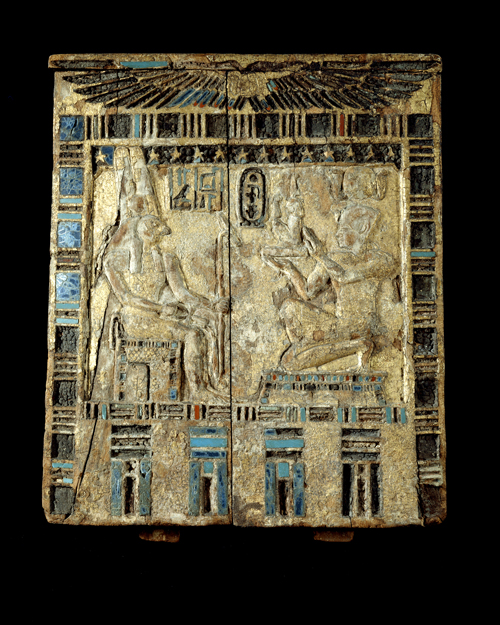
© 2006 Musée du Louvre / Georges Poncet
Late Period, 26th dynasty, reign of Amasis, 570-525 BC
Gilded wood inlaid with colored pâte-de-verre
H.: 31.5 cm; W.: 27.5 cm; D.: 4.5 cm
Department of Egyptian Antiquities, Musée du Louvre
(E 605)
As the point of contact between heaven (where the gods live) and earth (where humans live), a temple represented a horizon. The most sensitive area on the temple was the sanctuary with the naos that harbored the statue of the god worshiped there. This room was particularly well protected, and tabernacle was closed by a double door that Egyptians called the “gates of heaven.” It represented a passageway between the earthly world and the divine one.
The doors are decorated with a bas-relief depicting the high point of the temple ritual: the king Amasis kneels on a platform, wearing the khepresh crown, beneath the protective solar disk. He presented the seated god with a figurine of Maat, the goddess who incarnates order in the world. The falcon-headed god, wearing a solar disk capped by two tall feathers, is Sopdu. Associated with the East, Sopdu protected the eastern delta and watched over expeditions to the mines in the Sinai. In his hands he holds the was scepter, a sign of power, and the ankh symbol of life, two boons that he confers on the king in exchange for the offering. The rite takes place under a star-studded sky and a winged solar disk. Below, the decorative pattern evokes the façade of the archaic royal palace. Brief hieroglyphic captions identify the figures of Amasis and Sopdu.
This panel is one of the earliest examples of a wooden chapel inlaid with glass.